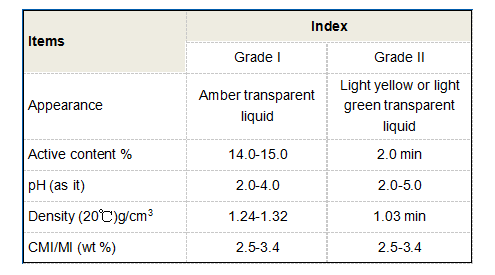Chemical Processes for Effective Water Treatment through Coagulation and Flocculation Techniques
Chemical Coagulation and Flocculation in Water Treatment An Overview
Water is an essential resource for life, and its quality is crucial for public health and environmental sustainability. Contaminated water can carry diseases and pollutants that pose significant threats to human health and aquatic ecosystems. To ensure water safety and purity, various water treatment processes are employed. Among these, chemical coagulation and flocculation are frequently utilized methods that play a pivotal role in the removal of suspended solids and contaminants from water.
Understanding Coagulation and Flocculation
Coagulation and flocculation are processes that work together to remove particles from water. Coagulation involves the addition of chemical coagulants—substances that promote the aggregation of suspended particles. Common coagulants include aluminum sulfate (alum), ferric chloride, and polyaluminum chloride. These chemicals destabilize the particles in water, which usually carry a negative charge, allowing them to cling together.
Once coagulation occurs, flocculation follows. This stage involves gently stirring the water to encourage the aggregated particles, or “flocs,” to form larger clumps. These larger flocs can then be more easily separated from water when subjected to sedimentation, filtration, or other separation techniques. Together, coagulation and flocculation significantly improve water clarity and reduce turbidity, making this process essential in water treatment systems.
The Coagulation Process
The coagulation process functions effectively in several stages. Initially, coagulants are added to the water. The pH of the water is often adjusted to optimize coagulation effectiveness. Following this, rapid mixing occurs, ensuring uniform distribution of the coagulant. This stage allows the coagulant to react with the suspended particles, starting the aggregation process.
Subsequently, the mixing speed is decreased, allowing the newly formed flocs to collide and grow larger through natural gravitational settling. Here, the gentle mixing helps maintain the water’s flow while promoting the interaction between the flocs, which enhances the chances of particle agglomeration.
chemical coagulation and flocculation water treatment

Flocculation The Next Step
As the flocculation process progresses, larger and heavier floc particles are formed. This requires a careful balance; the mixing must be sufficient to keep the flocs suspended yet gentle enough to prevent the breakdown of larger aggregates into smaller particles. The goal is to create flocs that are large enough to settle out of the water efficiently.
The duration of the flocculation process can vary based on the specific water quality conditions. Factors such as the type and concentration of contaminants, the selected coagulant, and the desired water quality all influence the time frame required for effective floc formation.
Removing the Flocs
Once the flocculation process is complete, the next step in water treatment involves removing the flocs from the water. This can be achieved through sedimentation, where the heavier flocs settle to the bottom of treatment tanks, forming a sludge that can be removed. Following sedimentation, the clearer water on top can then undergo further treatment such as filtration or disinfection to ensure that any remaining microorganisms or contaminants are addressed.
Conclusion
Chemical coagulation and flocculation are fundamental processes in water treatment that help to purify water, making it safe for consumption and use. By effectively removing suspended solids, these processes not only enhance water quality but also contribute to the overall efficiency of subsequent treatment methods. As concerns over water quality continue to grow in importance worldwide, understanding and optimizing coagulation and flocculation techniques will be vital in safeguarding public health and ensuring sustainable water resources. Through continued research and development, the future of water treatment processes can be refined to meet these challenges effectively.
-
Water Treatment with Flocculant Water TreatmentNewsJun.12,2025
-
Polymaleic AnhydrideNewsJun.12,2025
-
Polyaspartic AcidNewsJun.12,2025
-
Enhance Industrial Processes with IsothiazolinonesNewsJun.12,2025
-
Enhance Industrial Processes with PBTCA SolutionsNewsJun.12,2025
-
Dodecyldimethylbenzylammonium Chloride SolutionsNewsJun.12,2025





